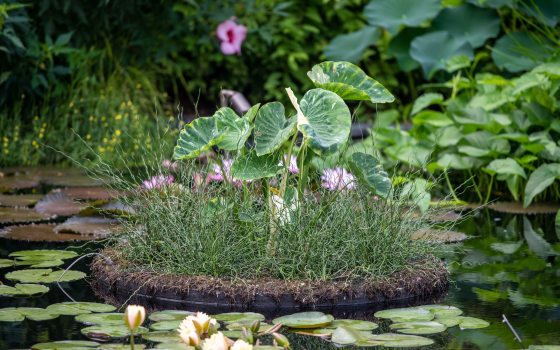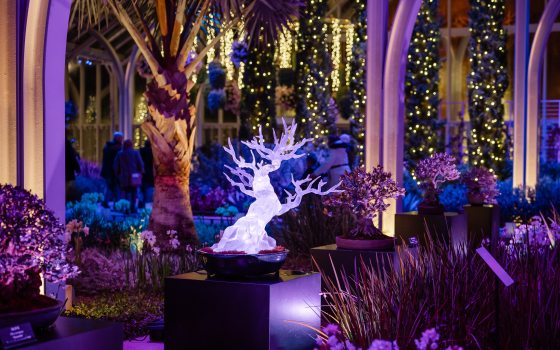From our massive water-platters to our vibrant day-and night-blooming hardy and tropical waterlilies, our Waterlily Display features aquatic plants from all over the world. As the gardener responsible for the Waterlily Display, I can say firsthand just how much we delight in sharing the beauty and the display possibilities of our aquatics collection with our guests. After trialing three floating islands last year, this year we’re using 12 floating islands in the display to add more plant diversity to the garden, as well as a way for us to grow plants we are thinking about eventually using in our display and to evaluate their attributes—such as flower color, bloom time, and habit—while sharing their beauty with our guests.
In their simplest form, floating islands can be thought of as floating container plantings. All of ours are tethered, but still move slightly with the water, giving them a lovely sense of motion. Many plants thrive in the saturated soil of floating islands and a surprisingly large number of plants can be grown successfully in floating islands’ semi-aquatic conditions. In fact, floating islands can be used in any size aquatic garden and are a fantastic option for those tending to their own such garden. Care and maintenance of plants housed in the floating islands are similar to other aquatic plants, with regular feeding and grooming during the season. One exception to that we occasionally need to go in and thin some of the more aggressive growing plants in our floating islands to prevent them from taking over the planting.
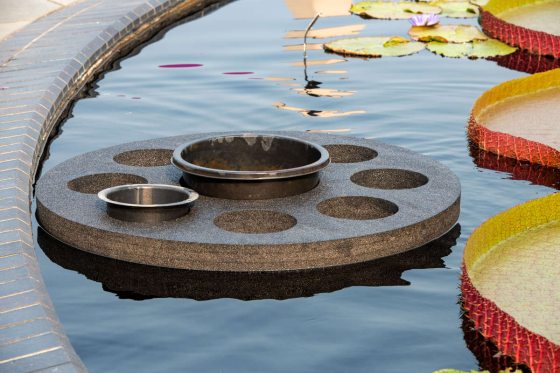
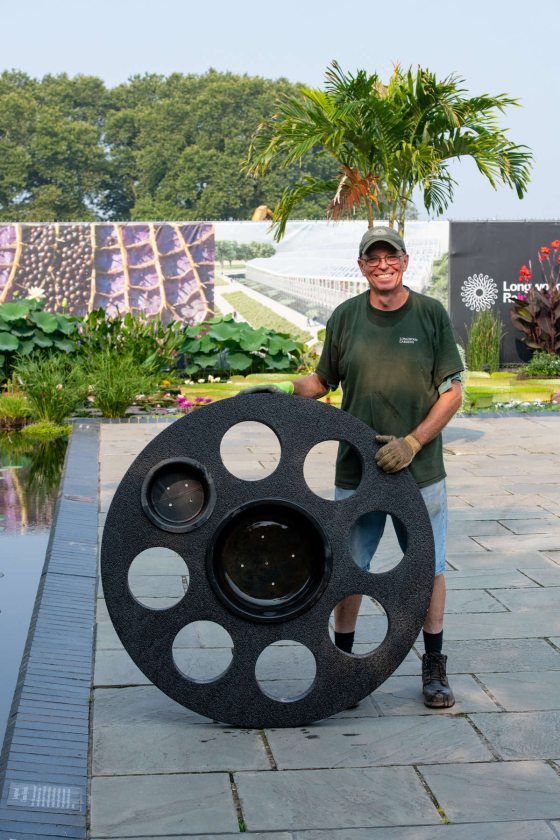
When planning and planting our floating islands, we follow many of the same general rules and design approaches that can be applied for the planting of non-aquatic containers. Most successful containers, including our floating islands, feature three distinct plant components that all work together to give a pleasing, long-lasting display: spiller, filler, and thriller. To design the planting combinations within each island we often start by looking at the plant’s form (upright, mounding, spreading, and so on) and then look at the overall texture of the plant along with any foliage attributes that make it unique. We also look at the plant’s floral characteristics and rely heavily on the plant’s form and texture to create a pleasing combination, even when the combination may not be in bloom.
Spiller plants are essential to the aesthetics of a container or floating island, as they hide the mechanics that are needed for the buoyancy and the plastic inserts that the plants grow in. Fortunately, many spiller plants are fast-growing and fill in quickly as the summer progresses. Bacopa monnieri (water-hyssop) is a favorite for its fast growth and succulent foliage that releases a citrus aroma when leaves are crushed.
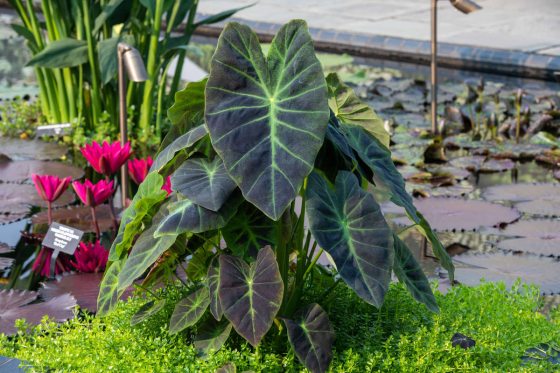
Filler plants can be considered the backbone plants of the container or floating island as they often dictate your container’s aesthetic. We choose our filler plants based on their foliage characteristics. We often think of tropical plants as being big, bold and exciting. Elephant’s-ear or taro, which can be seen around the Gardens, are popular choices and come in many different leaf colors and forms. For a more naturalistic container, try plants with a softer, more grass-like texture, as they will call out to be touched; many of the sedges, particularly in the genus Cyperus, are very tactile and beautiful.
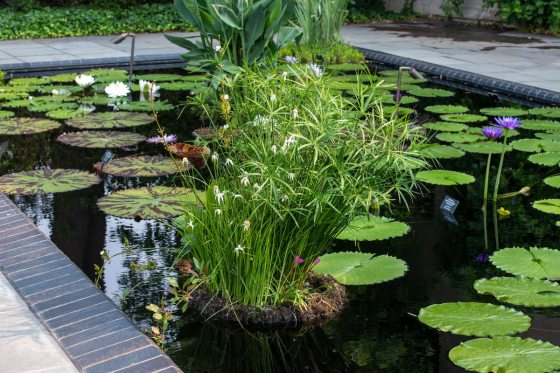
Thriller plants are often responsible for the WOW factor and frequently associated with color. Ruellia simplex (Britton’s-wild-petunia) and some Asclepias (butterfly-weed) are two examples of plants that fit this category.
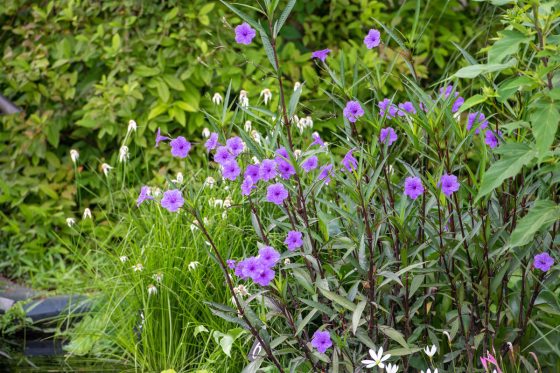
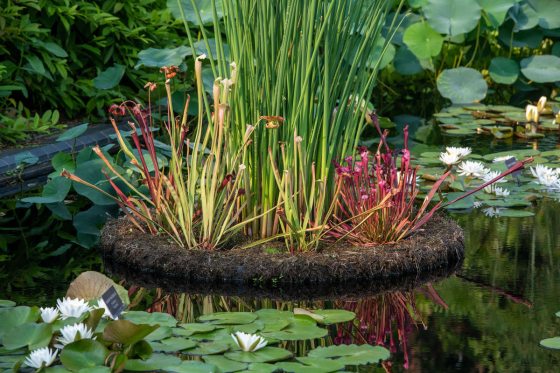

Come see our floating islands, complete with their filler, spiller, and thriller plant beauty, here in our Waterlily Display, and get a sneak peek at some of the plants we’re evaluating for future display here at Longwood.
